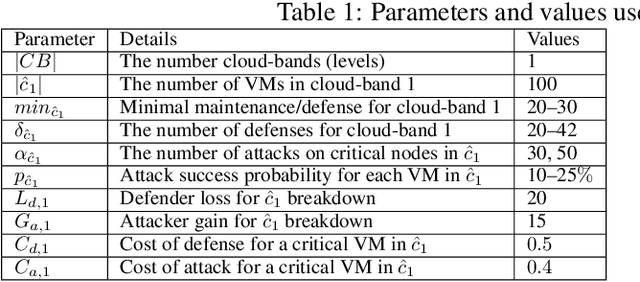A Game-Theoretic Approach for AI-based Botnet Attack Defence
Paper and Code
Dec 04, 2021



The new generation of botnets leverages Artificial Intelligent (AI) techniques to conceal the identity of botmasters and the attack intention to avoid detection. Unfortunately, there has not been an existing assessment tool capable of evaluating the effectiveness of existing defense strategies against this kind of AI-based botnet attack. In this paper, we propose a sequential game theory model that is capable to analyse the details of the potential strategies botnet attackers and defenders could use to reach Nash Equilibrium (NE). The utility function is computed under the assumption when the attacker launches the maximum number of DDoS attacks with the minimum attack cost while the defender utilises the maximum number of defense strategies with the minimum defense cost. We conduct a numerical analysis based on a various number of defense strategies involved on different (simulated) cloud-band sizes in relation to different attack success rate values. Our experimental results confirm that the success of defense highly depends on the number of defense strategies used according to careful evaluation of attack rates.
 Add to Chrome
Add to Chrome Add to Firefox
Add to Firefox Add to Edge
Add to Edge